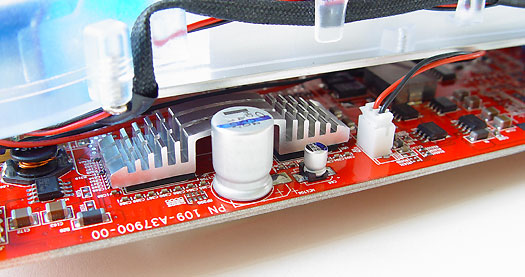Page 8
Overclocking & TweakingBefore we dive into an wide-ranging series of tests and benchmarks, we need to explain overclocking. With most videocards, we can do some easy tricks to boost the overall performance a little. You can do this at two levels, namely tweaking by enabling registry or BIOS hacks, or even tamper with Image Quality. And then there is overclocking, which by far will give you the best possible results.
What do we need?
One of the best tool for overclocking NVIDIA and ATI videocards is our own Rivatuner that you can download here. If you own a NVIDIA graphics card then NVIDIA actually has very nice built in options for you that can be found in the display driver properties.
Where should we go ?
Overclocking: by increasing the frequency of the videocard's memory and GPU, we can make the videocard increase its calculation clock cycles per second. It sounds hard but it really can be done in less then a few minutes. I always tend to recommend to novice users and beginners not to increase the frequency any higher then 5-10% of the core and memory clock. Example: If your card would run at 300 MHz then I suggest you don't increase the frequency any higher than 330 MHz.
More advanced users push the frequency often way higher. Usually when your 3D graphics will start to show artifacts such as white dots ("snow"), you should go down 10-15 MHz and leave it at that.
The core can be somewhat different. Usually when you are overclocking too hard, it'll start to show artifacts, empty polygons or it will even freeze. I recommend that you back down at least 15 MHz from the moment you notice an artifact. Look carefully and observe well.
All in all... do it at your own risk.
Overclocking your card too far or constantly to its maximum limit might damage your card and it's usually not covered by your warranty.
| Reference Design Pro |
Default on this x800 Pro | Maximum overclock | |
| Core Clock Speed |
The Radeon x700 Pro with IceQ Turbo from HiS was quite overclockable resulting in higher performance. For your information as novice user you should go with the supplied iTurbo software, the more advanced and experienced user should use a tool like Rivatuner.
You will benefit from overclocking the most with a product that is limited or you may call it "tuned down." We know that this graphics core is often limited by tact frequency or bandwidth limitation, therefore by increasing the memory and core frequency we should be able to witness some higher performance results. A simple trick to get some more bang for your buck.
The x700 Pro from HiS at default is doing 425 MHz. It's GDDR3 memory is (2x)432, thus 864 MHz.
The default clock setting you can alter them by using Rivatuner, which you can download here. We pushed everything tyoeards 500/500 and things were 100% stable. At 525 we saw a lockup.
One small reminder though, our overclocking results are never a guarantee for your results. Manufacturers' choices in components differ and so will the end-results. This however is a good indication of what is possible (or not).
The Test System
Now we begin the benchmark portion of this article, but first let me show you our test system.
- Albatron PX915P/G Pro (PCI-Express 16x enabled)
- 1024 MB DDR400
- GeForce 6600/6600GT/6800GT/Radeon X600
- Pentium 4 class 3.6 Ghz (Socket 775)
- Windows XP Professional
- DirectX 9.0c
- ForceWare 66.97 WHQL
- Radeon Catalyst 4.12 for ATI cards
- Latest reference chipset PCI-Express drivers
- RivaTuner 2.0 (tweak utility)
Benchmark Software Suite:
- Far Cry (Guru3D config & timedemo)
- Splinter Cell (Guru3D custom timedemo)
- Half-Life 2
|
The numbers (FPS = Frames Per Second) | ||||||||||||||
|
||||||||||||||
|
| ||||||||||||||

